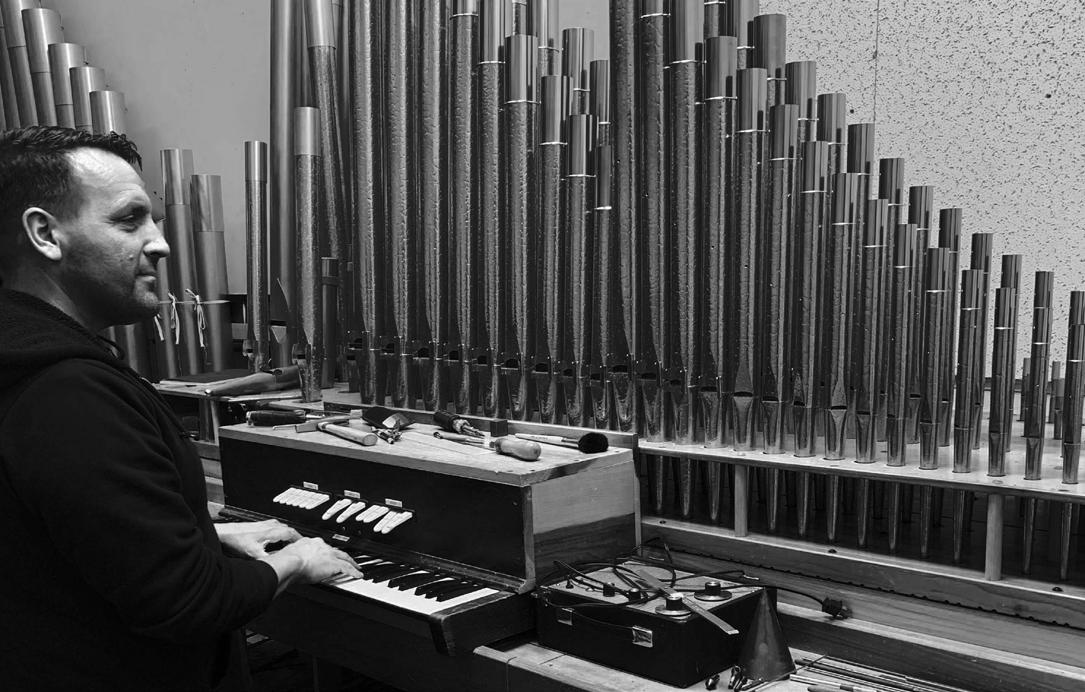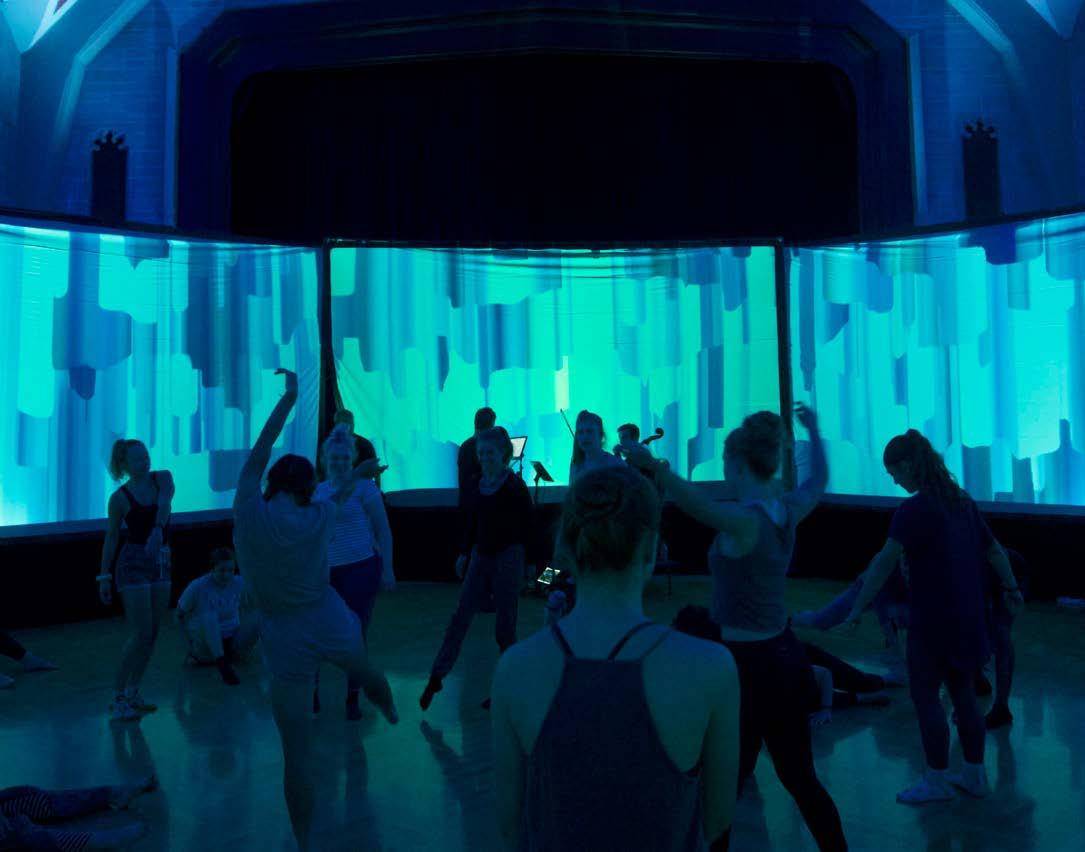
3 minute read
Learning to Listen
THE MUSIC OF PAULINE OLIVEROS AND ANNEA LOCKWOOD
Words by Elizabeth Frickey
Advertisement
As music lovers, we all think we know what it means to listen. Perhaps we put on our headphones, select a piece of capital-m Music, close our eyes and let ourselves become enveloped by the beautiful sounds we experience. Maybe we even arrive at a concert venue, find our seats and allow ourselves to become enraptured by the sounds produced by the well-trained musicians on stage. But what happens after the music fades or the curtain falls? Why does our mode of listening suddenly change?
It is easy to disregard everyday sounds as background noise in our normal listening environments. We often rely so much on other senses to guide us through the world that our brains begin to block sounds that constantly surround us. To some composers, the line between environmental noise and music is intentionally blurred.
Born in Houston in 1932, Pauline Oliveros was a founding member of the San Francisco Tape Music Center in 1962 and an early pioneer of analog electronic music. Despite the fact that her compositional career began primarily in creating electronic music, Oliveros was vocal about the influence of the sounds of the natural world
on her own musical development, especially the aural landscape of sounds she experienced growing up in Texas. Even one of her purely electronic works, Alien Bog (1967), mimics the sounds of frogs chirping and insects humming outside of her studio window.
On the other side of the world, Annea Lockwood was born in New Zealand in 1939. While Lockwood started her career studying a similar style of electronic music composition, she soon became bored with the systematic and predictable nature of purely analog electronic music. Impacted by her own sonic upbringing in New Zealand, she began experimenting with ambient and environmental sounds, even choreographing a sound art series of Piano Transplants (1969-82) in which old pianos were burned, drowned, beached and planted in an English garden.
Despite their geographic and stylistic differences, Oliveros and Lockwood expressed a mutual interest in composing through sonic awareness, and they soon developed a long-lasting friendship. Together, they continued to expand the boundaries of music composition into nontraditional territories. In the 1970s, Oliveros created the collaborative piece known as Sonic Meditations, a series of 25 exercises in collective awareness and aural perception. This was highly influential to Lockwood as well, who in turn created her own series of meditation pieces more specifically intended for individual listening.
In an increasingly noisy world, it can feel overwhelming to listen to the world around us. Perhaps we’d rather retreat into a world full of sounds that we can control and block out the noise. However, as the works of Oliveros and Lockwood demonstrate, sometimes that noise is exactly the music we should be paying attention to. ■
Practice Listening
Try following the instructions given by Lockwood in her 1973 text score, Water Meditations: “Go to a river. Stay there all day. Let the sounds change you and follow these changes.” You could also try going for a walk in your neighborhood without headphones and take note of the sounds that you hear. Record your sonic experiences in a journal afterwards.
To follow in the path of Oliveros, try performing “Teach Yourself to Fly” from her Sonic Meditations. By yourself or with a group get in a comfortable position. Start by observing the sound of your own breath. Gradually introduce your voice, allowing your vocal cords to vibrate naturally. Slowly allow the intensity of the sound to increase for as long as you’d like before returning to silence.
To learn more about deep listening, view Pauline Oliveros’ TEDxIndianapolis presentation on YouTube, or explore The Pauline Oliveros Trust at paulineoliveros.us. Find Annea Lockwood’s recent projects at annealockwood.com.










